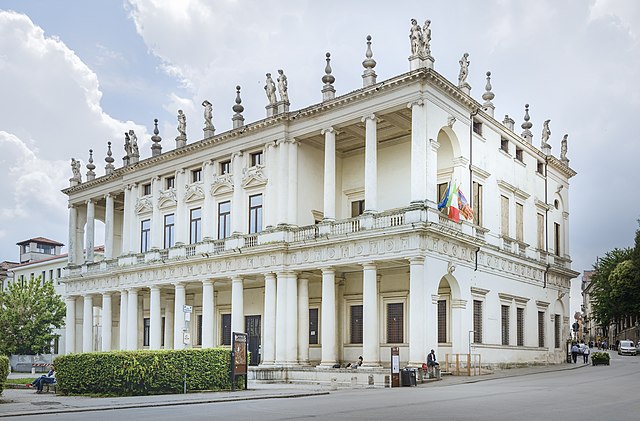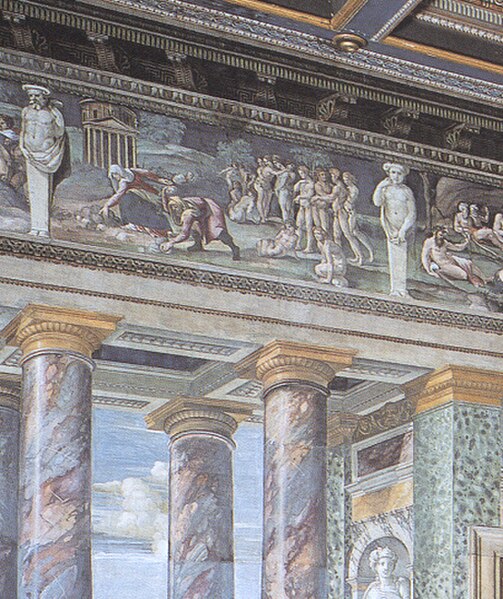West Wycombe Park is a country house built between 1740 and 1800 near the village of West Wycombe in Buckinghamshire, England. It was conceived as a pleasure palace for the 18th-century libertine and dilettante Sir Francis Dashwood, 2nd Baronet. The house is a long rectangle with four façades that are columned and pedimented, three theatrically so. The house encapsulates the entire progression of British 18th-century architecture from early idiosyncratic Palladian to the Neoclassical, although anomalies in its design make it architecturally unique. The mansion is set within an 18th-century landscaped park containing many small temples and follies, which act as satellites to the greater temple, the house.
The double, superimposed colonnade on the south front of West Wycombe. It has a Tuscan order ground floor and Corinthian upper floor with a central projecting pediment, very unusual in English architecture. (Marked M on plan below)
Palazzo Chiericati in Vicenza in Italy by Palladio (c.1550) has a superposed colonnade similar to that at West Wycombe, but the inspiration for the south front may have been Palladio's reconstruction of Vitruvius's Roman villa illustrated in his Quattro Libri.
Palladio's Villa Capra detta La Rotonda was the inspiration for Mereworth Castle in Kent, the home of Dashwood's uncle, Lord Westmorland. West Wycombe's east portico was in turn built as a homage to Westmorland's artistic taste at Mereworth.
Frescoes in the Villa Farnesina (c.1510) inspired the decoration of West Wycombe's interior.
West Wycombe is a small village and civil parish in Buckinghamshire, England, famed for its manor houses and its hills. It is 3 miles (4.8 km) west of High Wycombe.
The Mausoleum on West Wycombe Hill
A gold, Bronze Age penannular ring found in West Wycombe in 1985
St Lawrence's Church with its golden ball
The Swan pub








